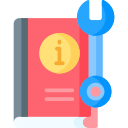Architecture and Design: From Whiteboard to Decision Record
Adopt consistent icons, layers, and annotations. Add callouts for compliance boundaries, data classifications, and failure domains. One fintech startup finally aligned engineering and finance after annotating cloud zones with cost and latency notes.
Architecture and Design: From Whiteboard to Decision Record
Capture context, options, and consequences in simple text-based ADRs linked to the repository. Months later, new hires can understand not only what changed but why. This alone reduces re-litigation of settled design debates.




